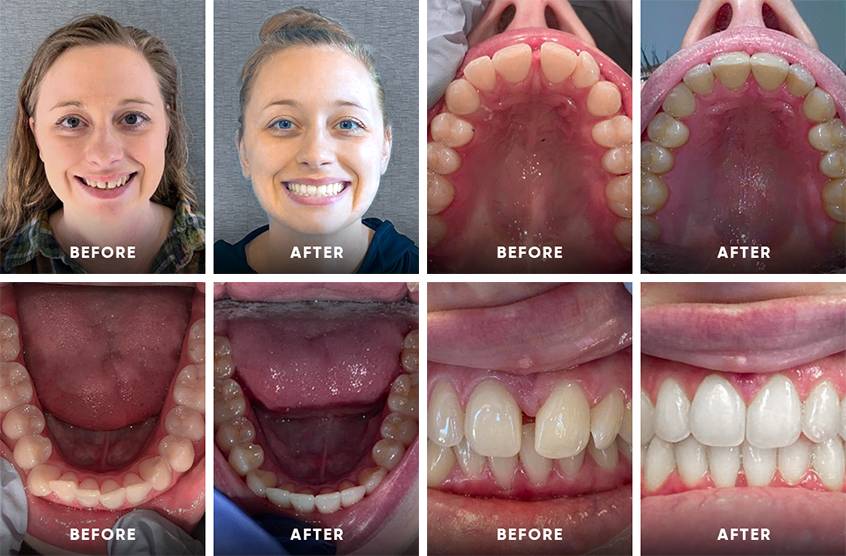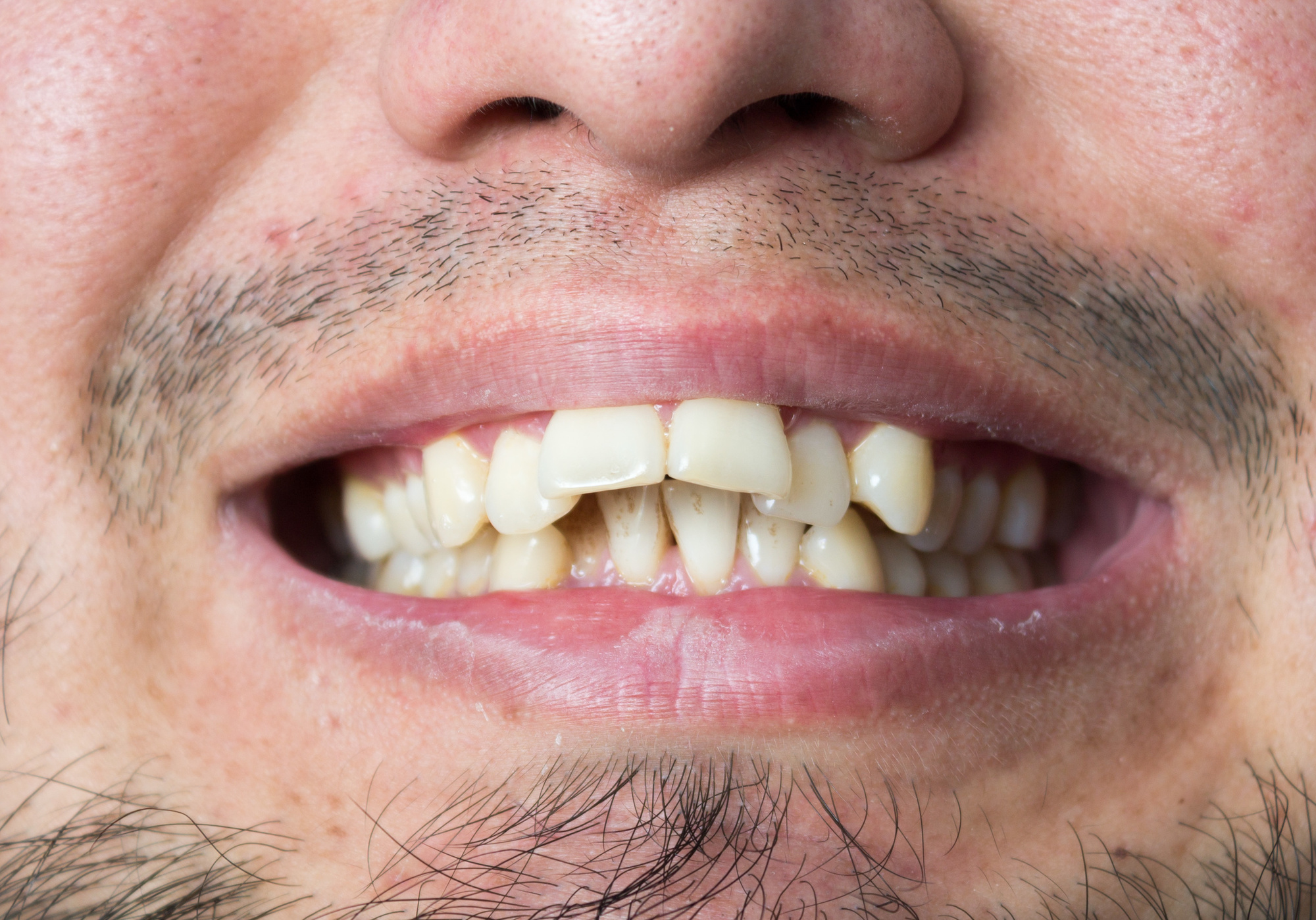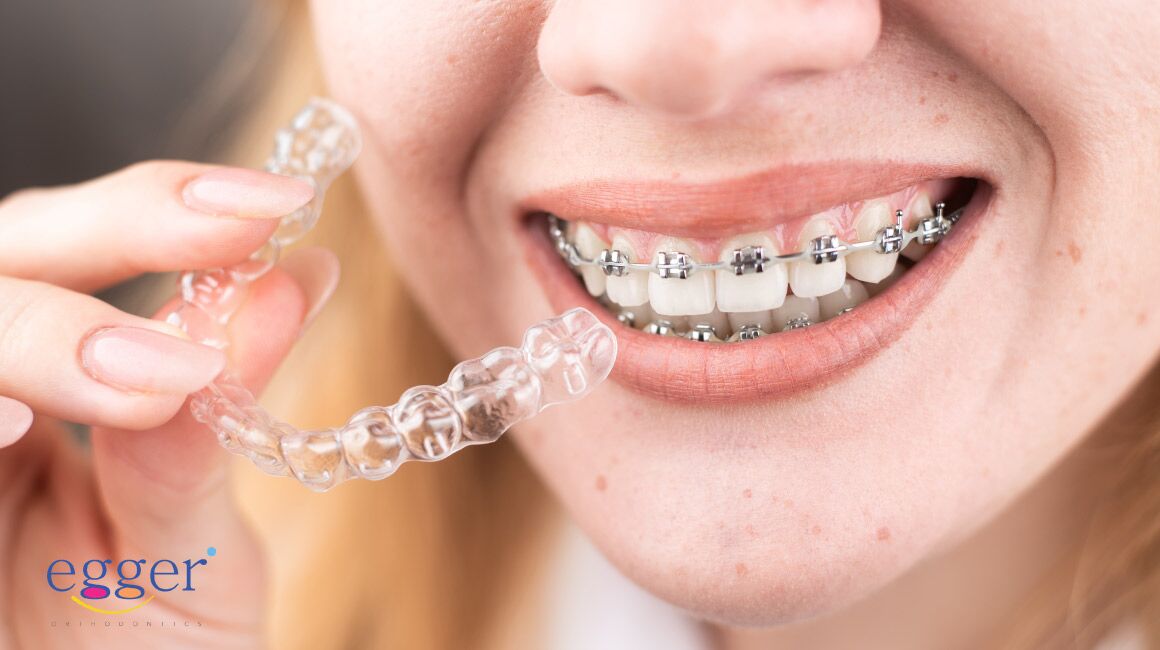Invisalign for Teenagers: A Modern Solution to Straightening Young Smiles
Invisalign for Teenagers: A Modern Solution to Straightening Young Smiles
Blog Article
Invisalign vs. Conventional Dental braces: Which Alternative Is Right for You?
When thinking about orthodontic therapy, the selection in between Invisalign and standard braces provides a number of essential aspects that warrant cautious evaluation. Invisalign provides a discreet option with removable aligners, while traditional braces offer a more noticeable yet reliable service for severe imbalance.
Overview of Treatment Options

On the other hand, standard dental braces contain steel brackets and wires that are bonded to the teeth. This technique applies continuous stress in time to accomplish placement. While efficient for complex orthodontic concerns, standard dental braces require normal visits for modifications and can present difficulties in preserving dental health as a result of the trouble of cleaning about brackets and cords.
Both options have their benefits, and the selection usually rests on details dental problems, lifestyle preferences, and individual compliance. Eventually, consulting an orthodontic specialist is essential for establishing the most appropriate therapy plan customized to individual requirements. Recognizing the nuances of each choice can dramatically affect the overall success of orthodontic treatment.
Visual Considerations
A considerable aspect influencing the choice between Invisalign and typical braces is the aesthetic charm each therapy supplies. Invisalign aligners are crafted from clear plastic, making them basically undetectable when used. This very discreet look is specifically interesting grownups and teenagers that might really feel self-conscious regarding their orthodontic therapy. The ability to keep an all-natural smile throughout the alignment procedure can substantially enhance the patient's self-confidence in expert and social setups.
On the other hand, traditional braces consist of steel brackets and cords, which can be more recognizable. While improvements in orthodontic innovation have caused the growth of smaller brackets and tinted elastics, standard braces still keep an even more obvious account. For some people, the presence of braces might hinder them from looking for required therapy.
Eventually, the selection between Invisalign and typical dental braces may pivot on personal choices concerning aesthetic appeals. Clients who prioritize discretion frequently lean towards Invisalign, while those that are less worried regarding exposure may select typical dental braces. Comprehending the aesthetic ramifications of each choice is essential for making a notified choice that straightens with one's way of life and preferences.
Convenience and Convenience

In terms of comfort, Invisalign aligners are detachable, making it possible for individuals to appreciate their preferred foods without constraint and preserve ideal dental health. Brushing and flossing are simplified, as the aligners can be gotten during these routines, whereas standard dental braces need cautious navigating around cables and braces.
In contrast, typical dental braces necessitate regular modifications, making them less practical for those with active schedules. Generally, the comfort and comfort of Invisalign make it an appealing option for lots of people seeking orthodontic treatment.
Treatment Period and Performance
While both Invisalign and traditional dental braces are effective in dealing with oral misalignments, the period of treatment can vary significantly between the 2 options. Normally, Invisalign treatment can take anywhere from 12 to 18 months, depending on the complexity of the situation. The clear aligners function by gradually moving teeth right into their preferred settings, and normal follow-ups with an orthodontist help make sure progression stays on track.
In contrast, standard dental braces frequently need a longer dedication, usually varying from 18 months to 3 years. This is due to their fixed nature and making use of cords and brackets, which can be a lot more reliable for complicated situations and serious misalignments (Invisalign). The treatment effectiveness of standard dental braces is well-documented, as they permit specific modifications and higher control over tooth motion
Eventually, the selection between Invisalign and typical braces may depend upon both the anticipated therapy period and the details oral issues at hand. Consulting with an orthodontist is important, as they can give customized suggestions based on individual demands, guaranteeing the chosen method straightens with wanted results and timeframes.
Expense Comparison and Insurance Options
Price plays a a fantastic read substantial function in the decision-making procedure for individuals taking into consideration orthodontic treatment, whether choosing Invisalign or conventional braces. On standard, the price of Invisalign varieties from $3,000 to $8,000, while conventional dental braces commonly set you back between $2,000 and $6,000. Elements influencing these costs consist of the intricacy of the instance, the duration of treatment, and geographical place.
Several dental insurance coverage strategies provide partial insurance coverage for orthodontic treatments, yet the specifics can differ widely. Typically, standard dental braces may be extra frequently covered by insurance coverage plans contrasted to Invisalign, which some insurance firms categorize as a cosmetic treatment.
In addition, several orthodontic practices provide versatile settlement strategies, making both treatment choices extra available. People need to ask about potential financing options and discounts for upfront payments. Assessing the complete cost, including insurance advantages and settlement strategies, look at these guys is crucial for making an educated decision that aligns with both aesthetic choices and spending plan factors to consider.

Final Thought
In recap, the option between Invisalign and standard braces pivots on several variables, consisting of aesthetic choices, comfort, therapy period, and expense. Invisalign supplies a very discreet, removable choice that helps with dental hygiene and dietary adaptability, while conventional dental braces might be preferable for intricate dental problems and often come at a reduced price factor. Ultimately, examination with an orthodontist is necessary to examine individual scenarios and establish the most proper therapy choice for achieving optimal dental placement.
When considering orthodontic treatment, the option in between Invisalign and typical braces presents a number of vital factors that merit careful examination.Comparing Invisalign and standard dental braces discloses distinctive therapy alternatives for orthodontic correction.While both Invisalign and conventional braces are effective in fixing dental misalignments, the duration of treatment can vary considerably between the 2 options.Cost plays a significant role in the decision-making process for people taking into consideration orthodontic therapy, whether opting for Invisalign or conventional dental braces.In summary, the choice between Invisalign and traditional braces pivots on numerous factors, including visual choices, comfort, treatment duration, and price.
Report this page